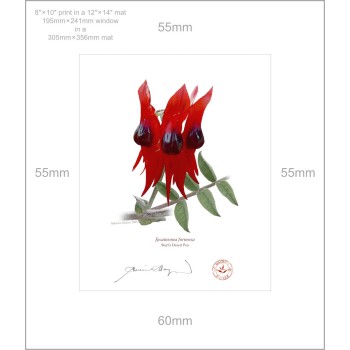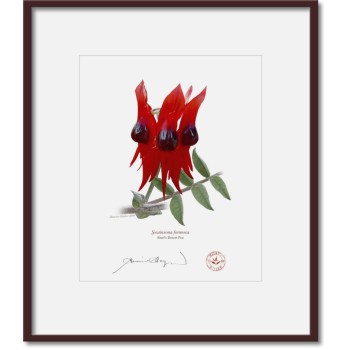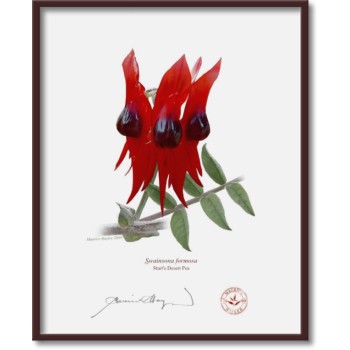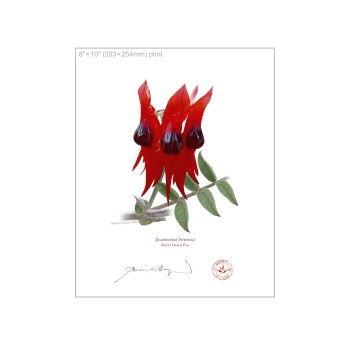Australian Botanical prints by artist Maurice Hayler, designed to endure.
Each print carries the artist’s signature and is stamp-embossed for authentication.
Our art is printed with care on Hahnemühle fine art archival paper with archival Epson UltraChrome pigment inks, good for at least 75 years. View all print and mat sizes here.
Please Note: that all orders typically leave within one to two business days.
We can (and do) process urgent and express orders on request.
Availability: In Stock
Ex Tax: $59.09
Please note that frames are not included and those shown in images are for display purposes only.
We do offer custom framing should this interest you.
All available print and mat sizes are covered in detail here, but to summarise:
Flat prints are printed sheets, trimmed to size, with no mat or backing supplied.
We offer the following sizes:
5″ × 7″ (127mm × 178mm)
8″ × 10″ (203mm × 254mm)
A4 (203mm × 297mm)
Our matted prints are the same printed sheets, but placed in archival (acid-free) mat and backing ready to frame.
(You can read more about our acid-free materials here.)
These come in the following sizes:
5″ × 7″ in a white 8″ × 10″ mat (outer dimensions are 203mm × 254mm)
8″ × 10″ in a white 12″ × 14″ mat (outer dimensions are 305mm × 356mm) (please note this is a non-standard size: read more here)
A4 in a white 12″ × 16″ mat (outer dimensions are 305mm × 406mm)
More detailed information about all print and mat sizes is here.
Botanical Information:
Family: FabaceaeGenus: Swainsona
Species: formosa
Meaning of name:
Swainsona, after Isaac Swainson (1746–1812), an English botanist famous for his botanical garden
formosa is from Latin: formosus, shapely, beautiful, handsome. The flowers
The Sturt’s Desert Pea is one of the more famous of Australian wildflowers, and it is the floral emblem of South Australia. Its natural environment is the arid central regions of Australia, and its range covers all the mainland States with the exception of Victoria.
While the plant was first collected by English explorer William Dampier in 1699, its common name comes from the later explorer Charles Sturt, who recorded seeing vast numbers of the flowers during his exploration of the Australian interior in 1844.
The Desert Pea is a prostrate legume that can spread out to about 2m (6.5 feet). The flowers appear from spring to summer, and especially after rain. The coloured spot in the middle of the flower is called the ‘boss’. While the blood-red flower colour with a black boss is the most well-known, there are naturally occurring red types with red or pink bosses, and a naturally occurring pure white form with a white boss as well. Six 8cm flowers are borne on each flower stalk, which turn into hairy pods, each containing about 50 flat, kidney shaped seeds.






